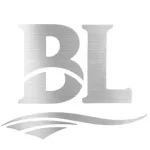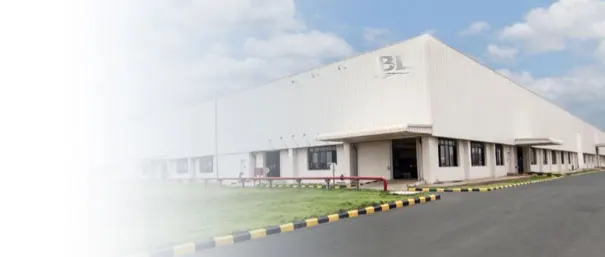JIS SUS304L Stainless Steel: Low-Carbon Austenitic Grade for Enhanced Corrosion Resistance in Welded Structures
JIS SUS304L stainless steel, designated under Japanese Industrial Standards (equivalent to ASTM 304L/UNS S30403), is a low-carbon variant of the classic 304 grade, offering superior resistance to intergranular corrosion in welded applications. With a maximum carbon content of 0.03%, this austenitic alloy maintains the 18% chromium and 8% nickel composition of standard 304 while eliminating carbide precipitation risks during welding. This technical guide explores its chemical properties, mechanical performance, fabrication characteristics, and industry-specific applications where SUS304L outperforms conventional 304 grade.
1. Chemical Composition (JIS G4305 Standard)
| Element | Content Range (wt%) | Metallurgical Role |
|---|---|---|
| Carbon (C) | ≤ 0.030% | Minimized to prevent chromium carbide formation at grain boundaries during welding (sensitization resistance) |
| Chromium (Cr) | 18.00 – 20.00% | Primary corrosion resistance element; forms protective Cr₂O₃ passive layer (minimum 10.5% required for stainless classification) |
| Nickel (Ni) | 8.00 – 12.00% | Stabilizes austenitic microstructure; enhances ductility and cryogenic toughness (face-centered cubic structure) |
| Manganese (Mn) | ≤ 2.00% | Deoxidizer; improves hot workability and partially substitutes nickel for cost reduction |
| Silicon (Si) | ≤ 1.00% | Enhances oxidation resistance at elevated temperatures; aids in deoxidation during melting |
| Phosphorus (P) | ≤ 0.045% | Residual impurity; controlled to prevent embrittlement and reduce pitting susceptibility |
| Sulfur (S) | ≤ 0.030% | Minimized to prevent hot cracking during welding and reduce inclusion formation |
| Nitrogen (N) | ≤ 0.10% | Optional addition; can improve strength and corrosion resistance (especially in duplex grades) |
2. Mechanical Properties at Room Temperature
- Tensile Strength: ≥ 520 MPa (JIS G4305 minimum; actual typically 580-750 MPa depending on cold work)
- Yield Strength (0.2% offset): ≥ 205 MPa (higher than standard 304 due to optimized microstructure)
- Elongation: ≥ 40% (superior formability for deep drawing and complex forming operations)
- Hardness: ≤ 201 HB (Brinell); ≤ 92 HRB (Rockwell) in annealed condition
- Impact Strength: ≥ 100 J at -196°C (Charpy V-notch; retains toughness in cryogenic applications)
- Modulus of Elasticity: 193 GPa (identical to standard austenitic grades)
- Density: 7.93 g/cm³ (standard for 18-8 austenitic stainless steels)
3. Manufacturing and Processing Characteristics
- Melting Practice: Electric arc furnace (EAF) followed by argon oxygen decarburization (AOD) or vacuum oxygen decarburization (VOD) to achieve ultra-low carbon content (<0.03%). Continuous casting ensures homogeneous microstructure.
- Hot Working: Optimal temperature range 1150-1260°C. Avoid working below 900°C to prevent carbide precipitation. Water quenching recommended after hot forming to retain corrosion resistance.
- Cold Working: Excellent ductility allows for severe cold deformation (up to 60% reduction in cross-sectional area). Intermediate annealing at 1010-1120°C required for heavy cold working to relieve work hardening.
- Heat Treatment: Solution annealing at 1010-1120°C followed by rapid cooling (water quench). Avoid sensitizing temperature range (425-815°C) to prevent chromium carbide formation.
- Machinability: Rated at 45% relative to AISI B1112 (free-cutting steel). Use sharp tools, slow speeds, and heavy feeds. Chip breakers recommended due to gummy chip formation.
- Weldability: Excellent weldability with all standard methods (TIG, MIG, SMAW). Recommended filler metals: ER308L or ER316L for enhanced corrosion resistance. No preheat required; post-weld annealing optional except for critical corrosion applications.
4. Corrosion Resistance Performance
| Corrosion Type | Performance | Test Method |
|---|---|---|
| General Corrosion | Excellent in atmospheric, fresh water, and mild chemical environments. Corrosion rate < 0.1 mm/year in rural atmospheres. | JIS Z 2382 (Salt spray test) |
| Intergranular Corrosion | Superior resistance due to low carbon content. Passes Strauss test (ASTM A262 Practice E) even in as-welded condition. | JIS G 0571/0572 (Strauss test) |
| Pitting Corrosion | PREN = 18.0-20.0 (Pitting Resistance Equivalent Number). Resists pitting in chloride concentrations < 200 ppm at room temperature. | JIS G 0577 (Pitting potential measurement) |
| Crevice Corrosion | Moderate resistance; avoid stagnant conditions with chloride concentrations > 50 ppm. Design should minimize crevices. | ASTM G48 (Ferric chloride test) |
| Stress Corrosion Cracking | Susceptible in chloride environments > 60°C. Avoid sustained tensile stresses in hot chloride solutions. | JIS G 0576 (Boiling MgCl₂ test) |
5. Key Application Industries
Chemical Processing Equipment
Storage tanks, reaction vessels, and piping systems for organic chemicals, dyes, and pharmaceutical intermediates. Resists corrosion from acetic acid, citric acid, and alkaline solutions up to 80°C.
Food & Beverage Processing
Welded equipment for dairy processing (milk tanks, cheese vats), brewery systems (fermentation tanks, kegs), and food transportation containers. Compliant with JFSL (Japan Food Sanitation Law) and FDA 21 CFR 177.2600.
Pharmaceutical & Biotechnology
Cleanroom-compatible piping, autoclaves, and fermentation systems. Low carbon content prevents particle generation during welding, critical for GMP compliance.
Architectural & Structural
Welded structural components for coastal buildings, bridges, and infrastructure where chloride exposure requires enhanced corrosion resistance compared to standard 304.
Cryogenic Applications
LNG storage tanks, liquid nitrogen/oxygen transportation systems, and superconducting magnet supports. Retains toughness at temperatures down to -196°C.
Water Treatment Systems
Desalination plant components, wastewater treatment equipment, and potable water storage tanks. Resists corrosion from chlorinated water up to 5 ppm residual chlorine.
6. Comparison with Related Grades
| Grade | Carbon Content | Key Advantages | Typical Applications | Cost Premium |
|---|---|---|---|---|
| SUS304 | ≤ 0.08% | Standard 18-8 austenitic grade; balanced properties for general use | Non-welded components, decorative applications, kitchen equipment | Baseline |
| SUS304L | ≤ 0.03% | Superior weldability; resistant to intergranular corrosion in as-welded condition | Welded structures, chemical tanks, pharmaceutical equipment | +5-8% |
| SUS304H | 0.04-0.10% | Enhanced high-temperature strength (up to 800°C); improved creep resistance | Boiler components, heat exchangers, furnace parts | +10-15% |
| SUS316L | ≤ 0.03% | Superior pitting/crevice corrosion resistance (2-3% Mo addition); marine-grade performance | Seawater applications, pulp/paper equipment, surgical implants | +25-30% |
7. Selection Guidelines and Engineering Considerations
- Welding Procedures: Use ER308L or ER316L filler metals for autogenous welding. Maintain interpass temperature < 150°C to avoid distortion. Post-weld pickling (HNO₃ + HF) recommended for critical corrosion applications.
- Surface Finish Selection: 2B finish (cold-rolled, bright annealed) for general use; BA (bright annealed) for decorative applications; No.4 (satin) for architectural panels requiring anti-fingerprint properties.
- Environmental Limitations: Avoid continuous exposure to chloride concentrations > 200 ppm or temperatures > 60°C in chloride environments. For marine applications, consider SUS316L instead.
- Forming Considerations: Springback is significant due to high ductility; overbending required for precise angles. Use nitrogen-enhanced lubricants to prevent galling during deep drawing.
- Quality Certification: Verify material test reports (MTR) confirm compliance with JIS G4305:2012. For pressure vessels, ensure PED/ASME certification as required.
- Alternative Grades: For higher strength requirements, consider SUS304N (nitrogen-strengthened) or duplex SUS329J3L. For elevated temperature service (> 400°C), SUS304H or SUS321 may be preferable.
8. Request a Technical Quote for SUS304L Stainless Steel
Require precision-cut SUS304L stainless steel plates, coils, or custom-fabricated components? Our metallurgical experts provide comprehensive technical support, including material selection guidance, welding procedure specifications, and corrosion resistance analysis. Contact us for competitive pricing on JIS-certified SUS304L products with full traceability and test documentation.
.content-wrap {
width: 100%;
max-width: 1200px;
margin: 0 auto;
padding: 20px 30px;
font-family: “Arial”, “Helvetica”, sans-serif;
color: #333;
line-height: 1.8;
}
.article-title {
font-size: 28px;
color: #222;
font-weight: 700;
margin: 0 0 30px;
padding-bottom: 15px;
position: relative;
border-bottom: 2px solid #eee;
}
.article-title::after {
content: “”;
position: absolute;
left: 0;
bottom: -2px;
width: 120px;
height: 2px;
background-color: #2c5282;
}
.article-intro {
font-size: 16px;
color: #444;
margin: 0 0 40px;
text-align: justify;
}
.section-title {
font-size: 22px;
color: #2c5282;
font-weight: 600;
margin: 50px 0 25px;
padding-left: 15px;
border-left: 4px solid #2c5282;
}
.table-container {
width: 100%;
overflow-x: auto;
margin: 0 0 30px;
}
.spec-table, .compare-table {
width: 100%;
border-collapse: collapse;
background-color: #fff;
box-shadow: 0 2px 5px rgba(0,0,0,0.05);
}
.spec-table th, .spec-table td,
.compare-table th, .compare-table td {
padding: 12px 15px;
border: 1px solid #eee;
text-align: left;
}
.spec-table th, .compare-table th {
background-color: #f8f9fa;
color: #2c5282;
font-weight: 600;
}
.spec-table tr:nth-child(even), .compare-table tr:nth-child(even) {
background-color: #fafafa;
}
.property-list, .process-list, .precaution-list {
padding-left: 20px;
margin: 0 0 35px;
}
.property-list li, .precaution-list li {
margin: 0 0 12px;
font-size: 15px;
}
.process-list li {
margin: 0 0 18px;
font-size: 15px;
}
.property-list strong, .process-list strong, .precaution-list strong {
color: #2c5282;
}
.application-grid {
display: grid;
grid-template-columns: repeat(auto-fit, minmax(280px, 1fr));
gap: 25px;
margin: 0 0 40px;
}
.application-item {
padding: 20px;
background-color: #fafafa;
border-radius: 6px;
border: 1px solid #eee;
}
.application-item h3 {
font-size: 18px;
color: #2c5282;
margin: 0 0 12px;
font-weight: 600;
}
.application-item p {
font-size: 14px;
color: #555;
margin: 0;
}
.quote-cta-section {
margin: 60px 0 20px;
padding: 30px;
background-color: #f8fafc;
border-radius: 8px;
border: 1px solid #e2e8f0;
}
.quote-cta-content {
max-width: 800px;
margin: 0 auto;
text-align: center;
}
.quote-cta-content p {
font-size: 16px;
color: #475569;
margin: 0 0 30px;
line-height: 1.8;
}
.quote-cta-btn {
display: inline-block;
padding: 12px 35px;
background-color: #2c5282;
color: #fff;
font-size: 16px;
font-weight: 600;
text-decoration: none;
border-radius: 4px;
transition: background-color 0.3s ease;
}
.quote-cta-btn:hover {
background-color: #1e3a8a;
}


